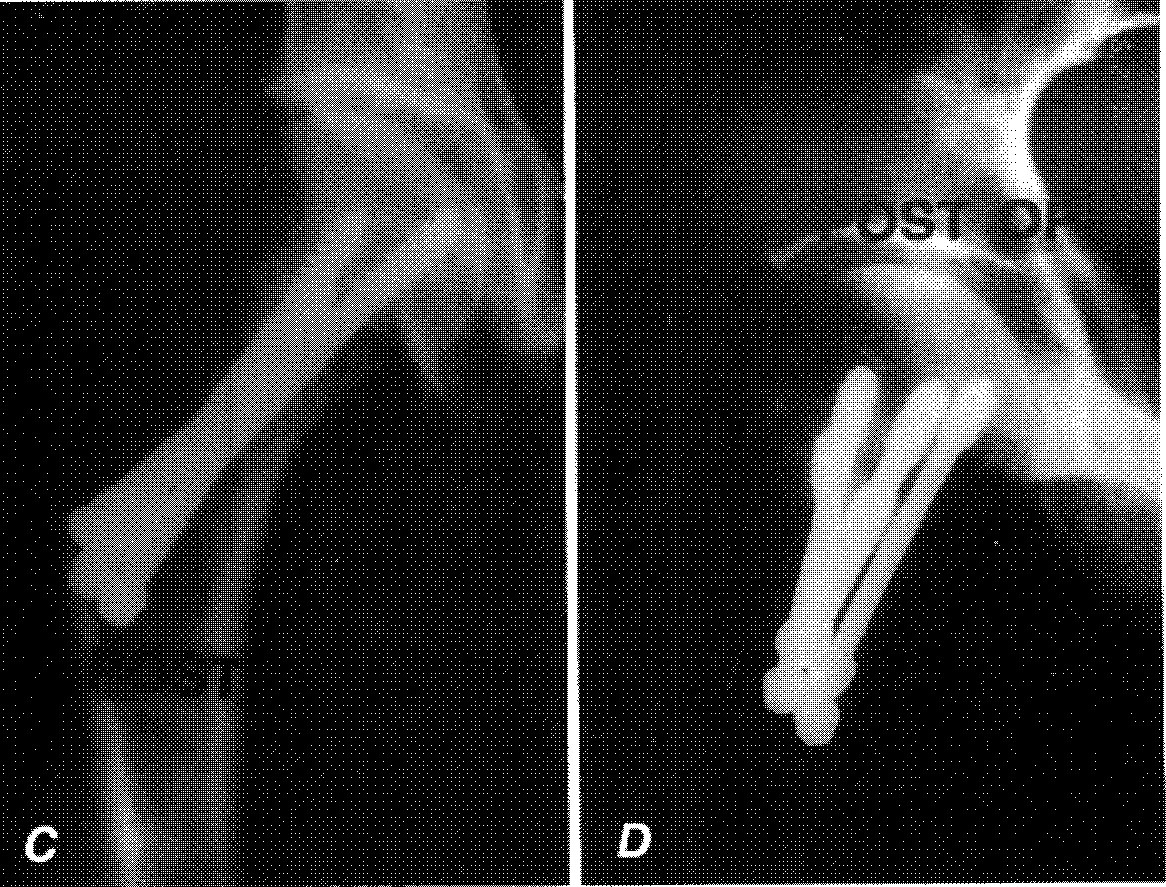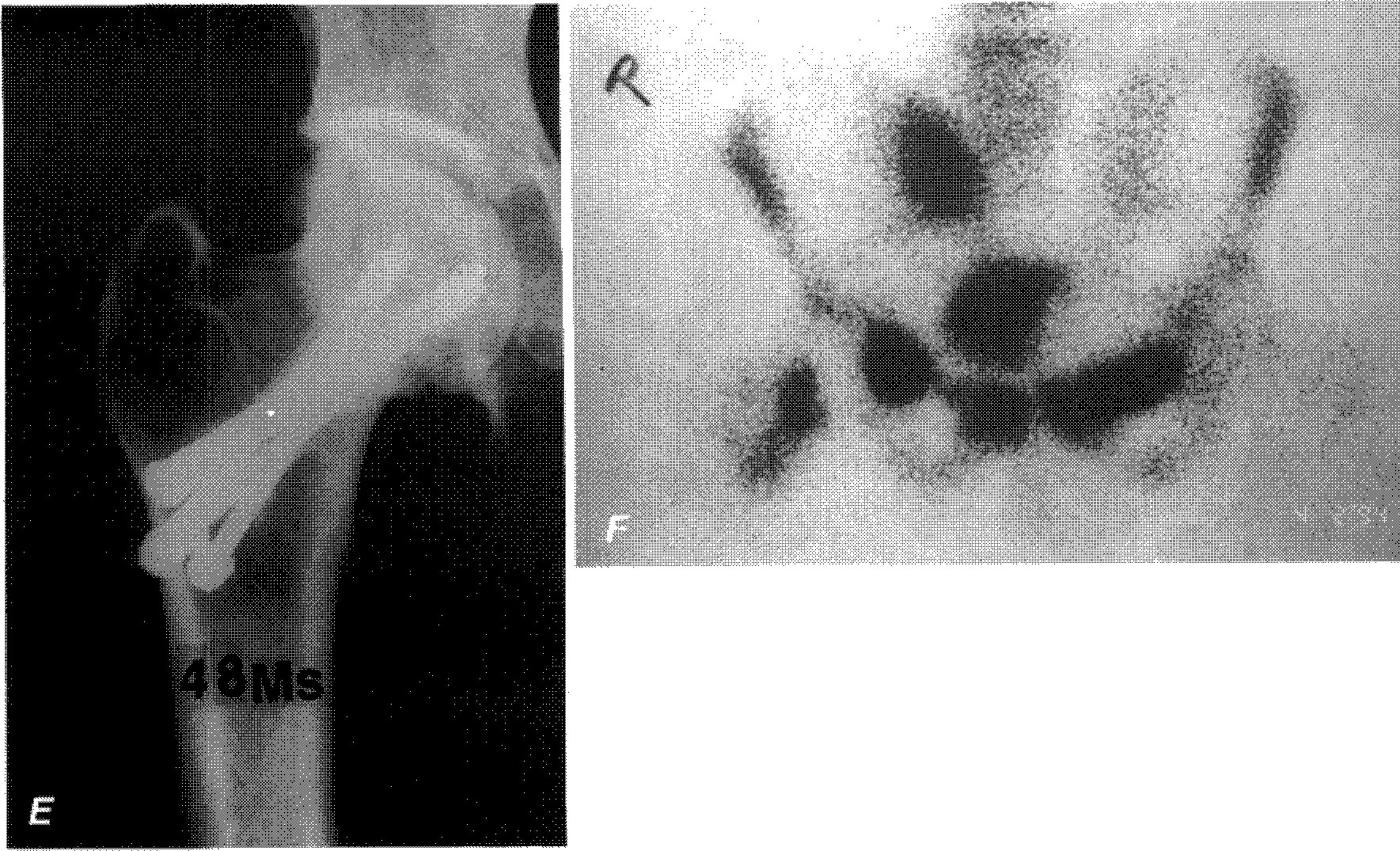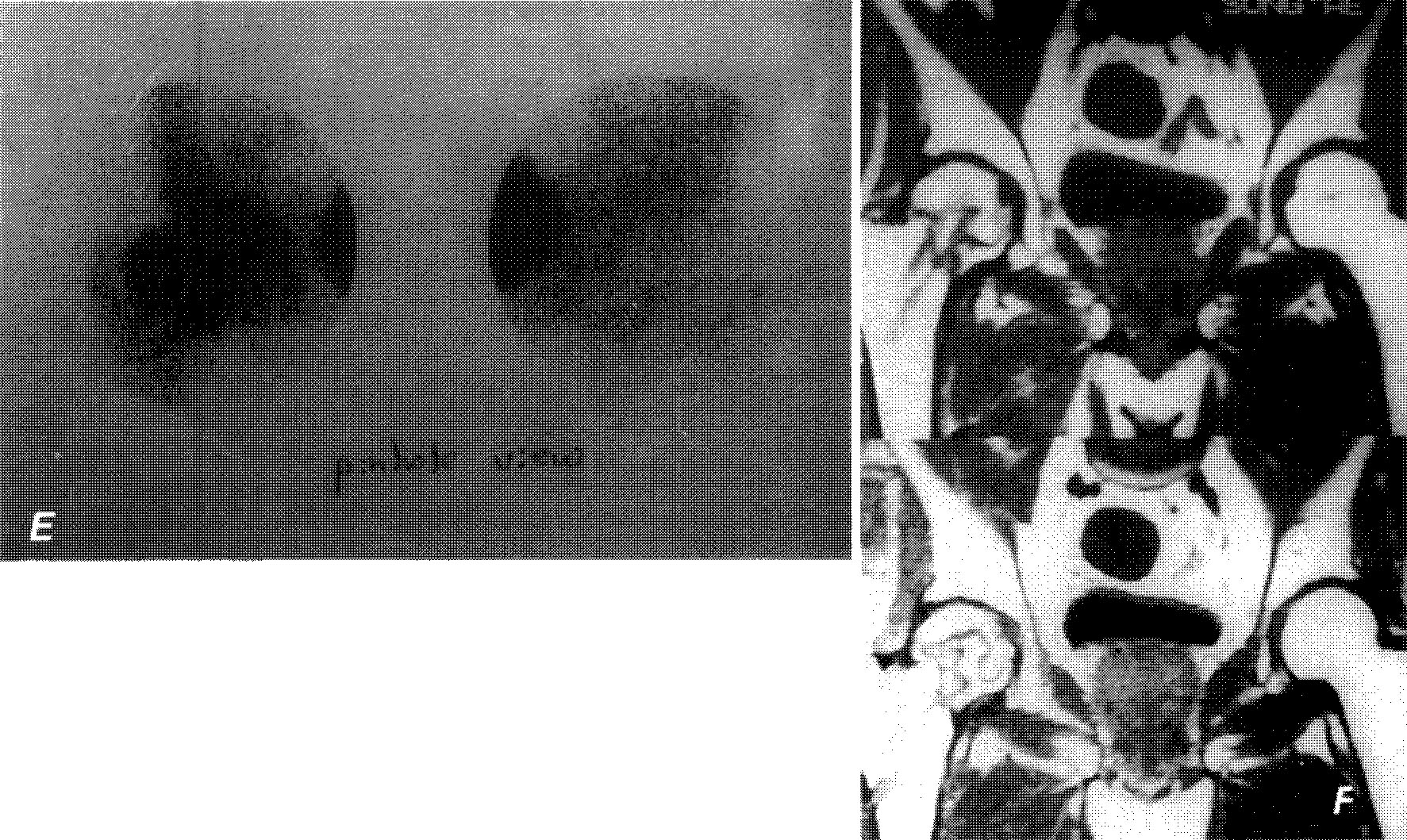Abstract
In general femoral neck fracture in young adult presents poor prognosis due to the high velocity
injury, high angle shear fractures, and poor candidate for arthroplasty. In addition to the relative rarity of the injury, the high incidence of aseptic necrosis and nonunion have been reported in the management of these fractures. 25 eases of femoral neck fracture in young adult were treated with multiple pinning and analyzed at Sung-Ae general hospital from 1987 to 1994 after 28 months follow up in average with review of charts, X-ray and clinical result.
There were 18 male and 7 female, 5 cases of them had significant polytrauma to other organs or skeletal system, authors tried to treat them as soon as possible to decrease the interval time between fracture and fixation (the average time was 39.7 hours.)
Union occurred in all of Garden stage I (4 cases) and II (4 cases), but in Garden stage III (7 among 3 cases) and IV (7 among 9 cases) the union rate was lower. Average union time was 16.5 weeks.
The incidence of complications (12%, 3 among 25 cases) was higher in displaced fractures group (Garden Stage III, IV) and also in poorly reduced group of Garden’s alignment index.
In conclusion, the prognosis of femoral neck fractures in young adult was related with mainly initial reduction and rigid fixation than the initial injury.
Go to : 
REFERENCES
6. Askin SR, Bryan RS. Femoral neck fractures in young adult. Clin Orthop. 1976; 114:259–264.
7. Barnes R, Brown JT, Garden RS. Subcapital fractures of the femur. J Bone Joint Surg. 1976; 58-B:2–24.
8. Barr JS. Experience with a sliding nail in femoral neck fractures. Clin Orthop. 1973; 92:63–68.
9. Calandruccio RA, Anderson WE. Post-fracture avascular necrosis of the femoral head. Correlation of experimental and clinical studies. Clin Orthop. 1980; 152:49–84.
10. Clark DJ, Crofts CE, Saleh M. Femoral neck fracture fixation. Comparison of sliding screw with lag screw. J Bane Joint Surg. 1990; 72-B:797–800.
11. Deyerle MW. Multiple-pin peripheral fixation in ractures of the neck of the femur. Clin Orthop. 1965; 39:135–139.
12. Deyerle MW. Impacted fixation over resiliant multiple pins. Clin Orthop. 1980; 152:102–122.
13. Gallagher JC, Melton LJ, Riggs BL, Bcr-gstralh E. Epidemiology of fractures of the proximal femur in Rochester Minnesota. Clin Orthop. 1980; 150:163–171. 1980.

14. Garden RS. Malreduction & avascular necrosis in subcapital fractures of the femur. J Bone Joint Surg. 1971; 53-B:183–197.
15. Halpin PJ, Neben CL. A system of classification of femoral neck fractures with special reference to choice of treatment. Clin Orthop. 1980; 152:44–48.

16. Keller CS, Lares GS. Indications for open reduction of femoral neck fractures. Clin Orthop. 1980; 152:131–136.

17. Knowles FL. Fractures of the neck of the femur. Wisconsin Med J. 1936; 35:106–109.
18. Kyle FR. Fractures of proximal part of the femur. J Bone Joint Surg. 76-A:924–950. 1994.
19. Lowell JD. Result and complications of femoral neck fractures. Clin Orthop. 1978; 152:162–172.
20. Lunceford EM Jr. Use of the Moore self locking vitallium prosthesis in acute fractures of the femoral neck. J Bone Joint Surg,. 47-A:832–841. 1965.
21. Massie WK. Extracapsular fractures of the hip treated by impaction, using a sliding nail plate fixation. Clin Orthop,. 22:180–202. 1962.
22. Märtensson L. Is swedeish hospital planning adequate? Lakartidningen 59:3185-3200, 1962(Quoted from Zetterberg CH, Irstam L and Anderson GBJ: Femoral neck fractures in young adults. Acta Orthop Scand. 1982; 53:427–435.
23. Protzman RR, Burkhalter WE. Femoral neck fractures in young adult. J Bone Joint Surg. 1976; 58-A:689–695.
24. Pugh WL. A self-adjusting nail-plate for fractures about the hip joint. J Bone Joint Surg. 1955; 37-A:1085–1093.

25. Scheck M. The significant posterior comminution in femoral neck fractures. Clin Orthop. 1980; 152:138–142.
26. Vangorder GW. Intracapsular fracture of the neck of the femur-treatment by internal fixation. Arch Surg. 1931; 23:2–715.
27. Swiontkowski MF, Winquist RA, Hansen ST Jr. Fractures of the femoral neck in patient between the ages of twelve and forty nine years. J Bone Joint Surg. 1984; 66-A:837–846.
29. Van Audekercke R, Martens M, Mulier JC, Stuyck J. Experimental study on internal fixation of femoral neck fractures. Clin Orthop. 1979; 141:203–212.
Go to : 
 | Fig. 1-AInitial post-operative 4 weeks X-ray of 40 old age male, Garden type, III, poor varus reduction in A-P plane, B. Post-operative 4 weeks X-ray of 40 male, lateral plane. C. Post-operative 6 months X-ray, nonunion state. D. Muscle pedicular bone graft was done, secondary post-operative 6 months, the union was obtained in A-P plane. E. Muscle pedicular bone graft was done, secondary post-operative 6 months, the union was obtained in lateral plane. F. Bone scanning show continued blood flow of femoral head, primary post-operative 6 months. |
 | Fig. 2-APre-operative X-ray of 34 male. cause of injury was traffic accident, garden type IV in A-P plane. B. Pre-operative X-ray in later-al plane. |
 | Fig. 2-CImmediated post-operative X-ray in A-P plane. D. Immediated post-operative X-ray. poor reductionin. in lateral plane. |
 | Fig. 2-EPost-operative 48 months X-ray, this shows the segmental collapse fo the femoral head in A-P plane. F. Confirmed AVN of the femoral head in bone scanning. |
 | Fig. 3-APre-operative X-ray of 29 male, cause of injury was ski injury in A-P plane. B. Post-operative 16 weeks X-ray shows the bony union. |
 | Fig. 3-CPost implant removal state for continuous morderate hip pain in A-P plane. D. Post implant removal state for continuous morderate hip pain in lateral plane. |
 | Fig. 3-EIncreased the blood flow in femoral hean in bone scan. F. Double density sign on MRI means localized avascular necrosis in femoral head. |
Table 1
Causes of injury.
| High energy injury | Low energy injury | Total | |
|---|---|---|---|
| Male | 16 | 2 | 18 |
| Female | 4 | 3 | 7 |
| 20 | 5 | 25 |
Table 2
Garden classification and acceptable reduction.
| Garden classification/Reduction | Good | Acceptable | Poor | Total |
|---|---|---|---|---|
| I | 4 | 4 | ||
| II | 2 | 2 | 4 | |
| III | 2 | 5 | 1 | 8 |
| IV | 6 | 3 | 9 | |
| Total | 8 | 13 | 4 | 25 |
Table 3-A
Garden classification and complications.
| Garden classification/Complication | Nonunion | AVN |
|---|---|---|
| I | ||
| II | ||
| III | 1 | |
| IV | 1 | 1 |
Table 3-B
Garden alignment index and complications.
| Garden’s alignment index | Nonunion | AVN |
|---|---|---|
| Good | ||
| Acceptable | 1 | |
| Poor | 2 |
Table 4
Complication & interval time between injury and fixation.
| 24hr- | 24-48hr | -48hr | |
|---|---|---|---|
| Union group | 14 | 3 | 5 |
| Complication group | 1 | 2 |
Table 5-A
Location of pins on A-P plane.
| 1/3 Superior | 1/3 Central | 1/3 Inferior | |
|---|---|---|---|
| Union | 20 | 33 | 35 |
| Complication group | 6 | 6 | 3 |
| 26 | 39 | 38 |
Table 5-B
Location of pins on lateral plane.
| 1/3 Anterior | 1/3 Central | 1/3 Posterior | |
|---|---|---|---|
| Union | 27 | 30 | 33 |
| Complication group | 5 | 7 | 3 |
| 32 | 35 | 38 |
Table 6-A
Union and Garden classification.
| Garden Classification | No | Period(Wks) |
|---|---|---|
| Stage I | 4/4 | 12.3 |
| II | 4/4 | 14.2 |
| III | 7/8 | 17.2 |
| IV | 7/9 | 19.5 |
| 22/25 | 16.5 |
Table 6-B
Union and Garden’s alignment index.
| Garden alignment index | No | Period(Wks) |
|---|---|---|
| Good | 8/8 | 15.0 |
| Acceptable | 12/13 | 16.9 |
| Poor | 2/4 | 20.3 |
| 22/25 | 16.5 |




 PDF
PDF ePub
ePub Citation
Citation Print
Print


 XML Download
XML Download